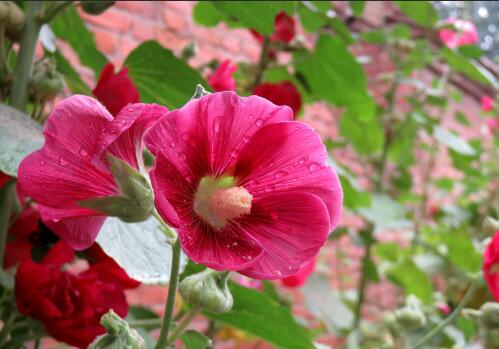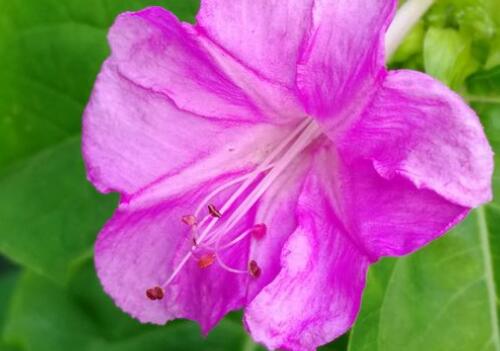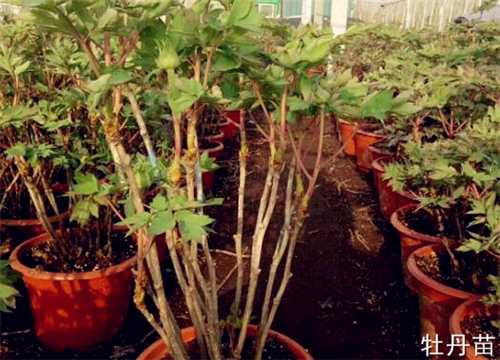How to grow hollyhocks? How to water and fertilize?
In recent years, with the development of the flower market, many "unknown" flowers have gradually come into people's field of vision, and the planting area is getting larger and larger, and hollyhock is one of them. What are the planting methods of hollyhock? How to water and fertilize it?

I. the basic situation of hollyhock
1. The origin and alias of hollyhock
Hollyhock is an herb native to Sichuan Province of China, also known as Yizhang Hong, Da Shu Ji, military sunflower, Wu Kui, Wei foot sunflower, Hu sunflower, Doupeng flower, straw flower. It is widely planted all over the world, and it is also widely distributed in China, such as East China, Central China and North China.
two。 The shape characteristics of hollyhock
The highest hollyhock can grow to about 2 meters, the stems and branches have dense bristles, the leaves are nearly round in shape, the leaves are rough and sparse pilose at the top, and the bottom is covered with hard hairs or villi, and the petiole is 5 to 15 centimeters long. The flowers of hollyhock are relatively large, with red, purple, white, pink, Yellow River black and purple and other colors. The flowering period is longer and can last from February to August.
3. The value of hollyhock
In addition to the ornamental value, hollyhock also plays a certain role in medicine. The mosaic of hollyhock has a certain adjuvant therapeutic effect in clearing heat and detoxification, diuresis and purging, and in the treatment of carbuncle, swelling and ulcers, small area burns and urethral infection.
Second, how to plant hollyhock, how to water and fertilize?
There are many ways to reproduce hollyhocks, including sowing, ramet and cuttage, which we can choose according to different conditions. If it is ramet and cutting should be carried out in spring, but the general production is mainly sowing, so the following mainly introduces the methods of sowing hollyhock and the main points of watering and fertilization.
1. Hollyhock can be used for sowing after the seeds are ripe and picked in August and September of that year, and can blossom the following year. If the bought seeds are sown in spring, they will blossom the following year, and they will almost emerge a week or so after the seeds are planted. In the south, if you sow seeds in autumn, you should pay attention to adding mulch to the seedlings to keep out the cold after winter.
two。 Hollyhocks like cool climate and light, are not resistant to heat and frost, and slightly resistant to shade; they are most suitable for planting in deep, fertile, well-drained soil. When sowing, you can directly sow seedlings in the open field and then transplant, or direct seeding without transplanting; transplanting should be properly combined with rainy days, which can help the seedlings.
3. The growth of hollyhock does not need too much water, so do not let its growth environment is too wet, too much water must be timely drainage, to avoid the root rot of hollyhock affect growth. The amount of watering during this process should be increased or decreased appropriately according to the situation:
(1) Spring is the season for its growth, and it can be watered more appropriately when Rain Water is less, but if there is more overcast and rainy weather, stagnant water should not occur step by step; if it is a home-raised hollyhock potted plant, it should be watered according to the dry and wet soil in the pot plant. When the soil is dry, it is replenished with proper moisture, and when the soil is moist, there is no need to water it.
(2) the water demand during the flowering period of hollyhock is relatively large, so it can be watered every few days, and each watering can keep the soil moist. In this way, to ensure the moisture in the flowering period, not only the plant growth is better, but also the flowering period may be prolonged.
(3) plants begin to go dormant in autumn and winter, and hollyhock is no exception. At this time to reduce the amount of water and watering times, into the cold winter to stop watering to keep warm.
In addition, we should remind you that summer watering should be carried out in the morning and evening, and if the soil is relatively dry, it should be watered thoroughly.
4. The nutrients needed for plant growth are not only from the soil and photosynthesis, but also from the fertilizers we use:
The main results are as follows: (1) during the growth period of hollyhock seedlings, 2Mel can be applied 3 times with nitrogen fertilizer as the main liquid fertilizer, and attention should be paid to weeding and loosening the soil in order to promote the healthy growth of the plant.
(2) in the growth of flower buds, it is necessary to apply phosphorus and potassium fertilizer, and ensure sufficient water to promote growth.
5. In the growth process of hollyhock, traditional Chinese medicine should pay attention to the prevention and control of sunflower rust, red spider, white spot and other diseases and insect pests, and use different agents according to different conditions.
Friends who like hollyhocks can choose dwarf varieties to plant, and it is a good scenery to put them on the balcony, living room and other places.
Time: 2019-03-13 Click:
- Prev

When does purple jasmine usually bloom? Put these planting methods away!
Speaking of purple jasmine, most people may think of purple jasmine, but in fact, although it belongs to the purple jasmine family, it is not jasmine. The following is to introduce its information and when to blossom! In addition, friends who like purple jasmine can also take a look at how to grow it. The basic situation of purple jasmine
- Next

How much is the price of peony seedlings of "famous Chinese flowers"? 6 steps of planting method to share!
There is no need to say more about peonies! I believe everyone knows that peony is one of the top ten famous flowers in China, which has been cultivated in China for thousands of years. What is particularly commendable is that the color of peony is not the same color, but colorful, with high ornamental value.
Related
- Fuxing push coffee new agricultural production and marketing class: lack of small-scale processing plants
- Jujube rice field leisure farm deep ploughing Yilan for five years to create a space for organic food and play
- Nongyu Farm-A trial of organic papaya for brave women with advanced technology
- Four points for attention in the prevention and control of diseases and insect pests of edible fungi
- How to add nutrient solution to Edible Fungi
- Is there any good way to control edible fungus mites?
- Open Inoculation Technology of Edible Fungi
- Is there any clever way to use fertilizer for edible fungus in winter?
- What agents are used to kill the pathogens of edible fungi in the mushroom shed?
- Rapid drying of Edible Fungi

